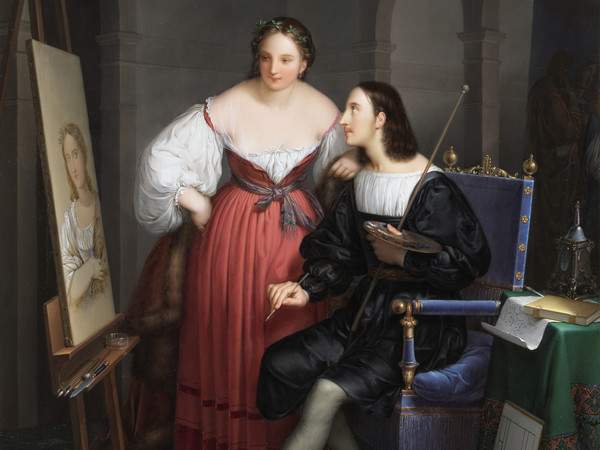Raphael. TheInvention of the Divine Painter, curated by Roberta D’Adda, is the exhibition that runs until January 10, 2021 at the Museo di Santa Giulia and features a collection of prints d’après Raphael, made in Italy and Europe from the early 16th century to the mid-19th century, along with a selection of paintings and art objects.
The visit is completed with an itinerary in the city between Pinacoteca Tosio Martinengo, which houses two works by Raphael, and theAteneo di Brescia - Accademia di Scienze Lettere e Arti, which presents a series of large-format Raphael prints. A project Fondazione Brescia Musei.
Over one hundred works, including engravings and art objects, taken from Raphael’s inventions and produced in Italy and Europe from the beginning of the sixteenth century to the mid-nineteenth century; the story of an era and the construction of a myth, starting from the Brescia civic collections that collect more than six hundred sheets d’après Raffaello.
Raphael. The Invention of the Divine Painter is an itinerary that shows how the language and inventions of the Urbino genius were popularized until the gradual identification of those Raphaelesque works that gradually went on to determine the modern idea of the painter.
Beginning with the engravings produced by Marcantonio Raimondi and the group of engravers who, according to the tradition established by Vasari, were involved by Raphael in the activity of his workshop with the task of handing down the memory and ensuring the dissemination of his inventions, the exhibition develops through a number of objects inspired by the master and produced in the sixteenth century to the following centuries, the seventeenth and the eighteenth centuries, with prints by Giorgio Ghisi, Carlo Maratta, Orazio Borgianni, Nicolas Dorigny and Raffaello Morghen and with the extraordinary feat of illustrating the Vatican Loggias and Rooms, produced by Volpato on large-format sheets.
The 19th century was the century in which Brescia, thanks to the work of Paolo Tosio and his circle of connoisseurs and artists, became one of the nodes in the network of relations and influences that brought about a romantic renewal of the Raphael myth.
Thanks in part to the presence of the Redeemer, purchased in 1821, Palazzo Tosio in fact became a pole of attraction, as evidenced by a youthful drawing by Piccio, a challenging pictorial copy of the School of Athens executed by Giuseppe Bezzuoli through a passionate study from life, and a panel by Felice Schiavoni with Raphael portraying the Fornarina (pictured), a tribute to theUrbino’s legendary and passionate love.
On display, alongside interpretations from the Brera School of Engraving, are works by several European engravers, including Ludwig Grüner, a friend of Paolo Tosio and a longtime guest in his house, who it was in Brescia that he launched his career as an engraver d’après Raphael that continued even after his move to London as artistic adviser to Queen Victoria and Prince Albert. Within the itinerary some unique pieces, never exhibited before, from the Emilio Anderloni Collection, including the copper plates and drawings of Pietro Anderloni’s Stanze.
The project is rounded out by a series of educational activities, workshops and guided tours for all audiences, as well as the InVece di Raffaello experience show, created by CamerAnebbia to bring the language of engraving closer to contemporary sensibilities by offering an immersive and interactive experience: with a touchscreen and intuitive controls, it is possible to navigate through the engravings on display, appreciating their details and marveling at the unprecedented three-dimensional effects. The digital section also includes videomapping, which will animate the facade of the Tosio Martinengo Art Gallery during the first three days of the exhibition’s opening.
The public is invited to complete the visit to Brescia both at the Pinacoteca Tosio Martinengo, custodian of two masterpieces by Raphael, and at Palazzo Tosio, where the collection was formed and which is now the seat of the Ateneo di Brescia - Accademia di Scienze Lettere e Arti, which presents for the occasion a series of large-format Raphael prints by Giovanni Ottaviani and Giovanni Volpato. A path of discovery and enhancement that thus involves the entire city: the exhibition ticket allows free access to the Pinacoteca Tosio Martinengo.
For all information you can visit the official website of the Santa Giulia Museum.
 |
| An exhibition of prints d'après Raphael from the 16th to the 19th century in Brescia |
Warning: the translation into English of the original Italian article was created using automatic tools. We undertake to review all articles, but we do not guarantee the total absence of inaccuracies in the translation due to the program. You can find the original by clicking on the ITA button. If you find any mistake,please contact us.